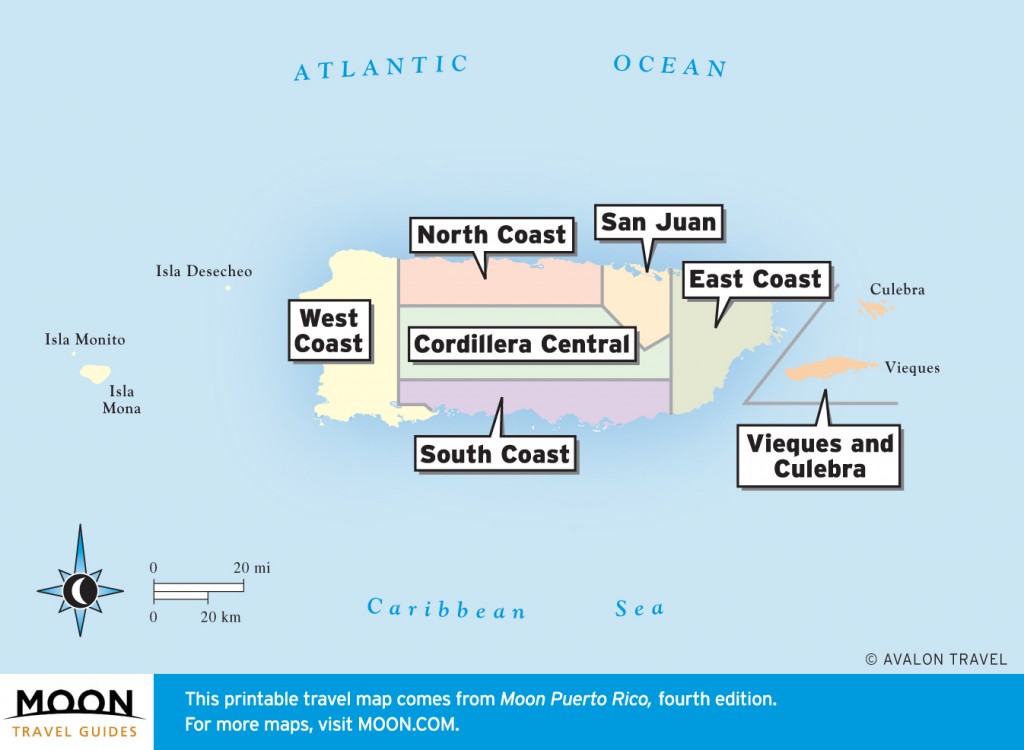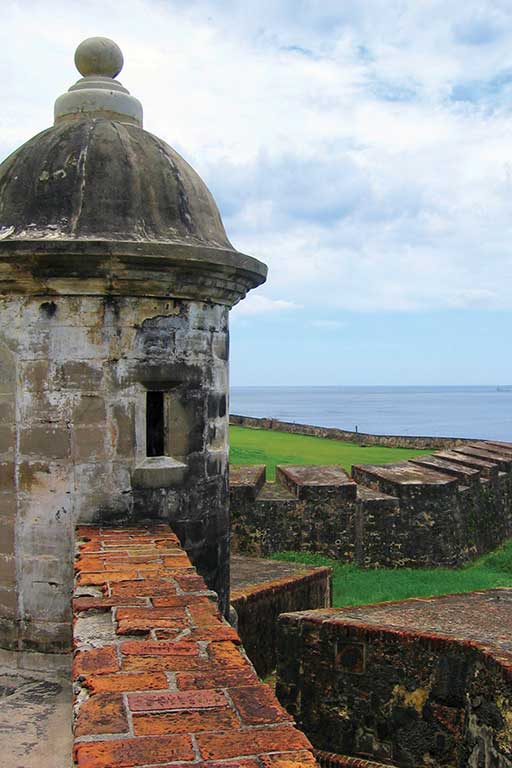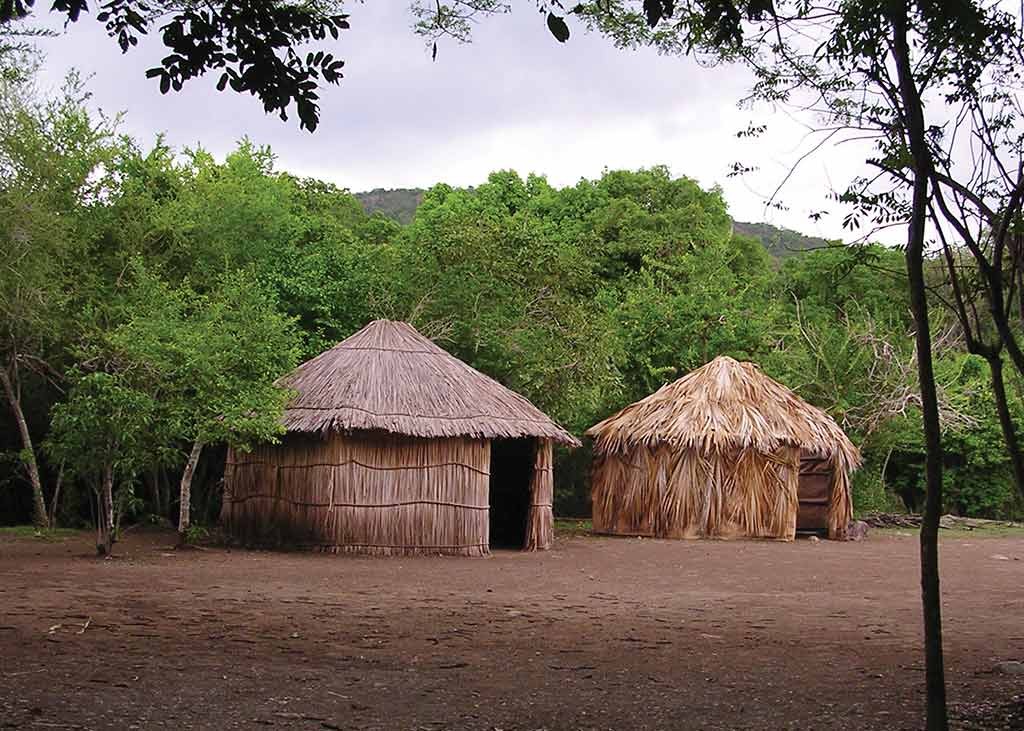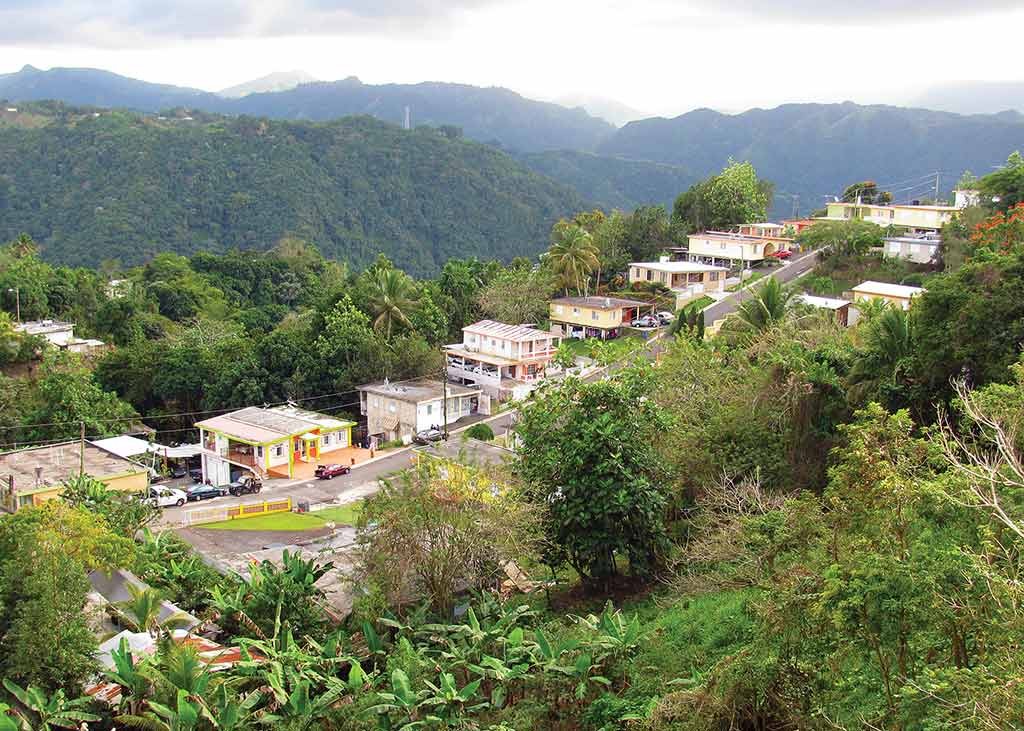Though relatively small, there’s no shortage of places to explore and things to experience in Puerto Rico. Many areas are reachable by day-trip from hip, bustling San Juan, making it easy to break up the party-hardy with a nature escape. In Puerto Rico you’ll find beaches, mangrove lagoons, sleepy seaside towns, bioluminescent bays, and dramatically beautiful mountains as easily as you’ll find rich Old World elegance, museums, indigenous cultures, ancient ruins, and luxury resorts.

Puerto Rico travel maps by region.
Situated on the northeast coast, sophisticated, fast-paced San Juan is Puerto Rico’s capital and largest city. Its heart is Old San Juan, the original walled city founded by Spanish settlers in 1521, home to two fortresses: Castillo San Felipe del Morro and Castillo de San Cristóbal. Other significant neighborhoods include Isla Verde, with the city’s best beaches and most exclusive hotels, and Condado, considered the tourist district, where you’ll find high-rise hotels, high-end shops, and casinos. In nearby Santurce is a burgeoning arts district, home to galleries, studios, and Museo de Arte de Puerto Rico.
Vieques is also the site of Mosquito Bay, Puerto Rico’s most outstanding bioluminescent bay, where the water glows an electric blue at night.Land-and-air vacation packages are available at resorts and hotels in Condado and Isla Verde. Because the island is only 111 miles by 36 miles, you can take a day trip to anywhere in Puerto Rico from San Juan; popular ones include El Yunque Caribbean National Forest in Río Grande, the beach and kioskos in Luquillo, and the colonial city of Ponce.
Castillo San Felipe del Morro. Photo © Suzanne Van Atten.
The east coast contains Puerto Rico’s most popular tourist sight, El Yunque Caribbean National Forest, a 28,000-acre nature preserve in the Sierra de Luquillo. The second most popular sight on the island is Balneario La Monserrate, a beautiful beach in Luquillo. Fajardo is the boating center of Puerto Rico, where you can go diving, snorkeling, fishing, sailing, and kayaking. It is also home to the small but ecologically diverse Reserva Natural Las Cabezas de San Juan, which contains a bioluminescent bay. The southern part of the east coast is the least touristy part of the island and features several nice beaches and good seafood restaurants. Land-and-air packages and all-inclusive meal plans are available at resorts in Río Grande. All-inclusive meal plans are offered by some hotels in the southeastern part of the island.
Ponce, the island’s second-largest city outside of metropolitan San Juan, was once a wealthy international port and a major player in the sugar and coffee industries. The city boasts gorgeous neoclassical and Spanish Revival architecture, a thriving plaza, and a strong cultural heritage preserved in its many museums. Just north of town is one of the island’s two major indigenous cultural sites. Centro Ceremonial Indígena de Tibes was once home to two indigenous tribes, the Igneri and the Pre-Taínos. Also north of town is Hacienda Buena Vista, a former 19th-century coffee plantation that has been restored.

Re-created Taíno bohio dwellings at Centro Ceremonial Indígena de Tibes. Photo © Suzanne Van Atten.
Within the west coast region are the fun-loving surf towns of Isabela, Rincón, and Aguadilla; the colonial cities of Mayagüez and San Germán; the fishing village of Boquerón; the bioluminescent bay in La Parguera; and the salt flats of Cabo Rojo. In addition to being a major destination for surfing and diving, the west coast has one of the island’s loveliest public beaches, Balneario de Boquerón. And it is also home to two major forests, Bosque Estatal de Guajataca, a 2,357-acre subtropical wet forest in the north, and Bosque Estatal de Guánica, a 10,000-acre subtropical dry forest in the south.
Much of the north coast is karst country, distinguished by limestone hills and caves, which makes for lots of rocky beaches and seaside cliffs. But there are two terrific sandy beaches—Balneario Cerro Gordo in Vega Alta and Playa Mar Chiquita in Manatí. Perhaps the biggest draw on this coast is Las Cavernas del Río Camuy, a gorgeous cave park featuring hikes through enormous caverns by a subterranean river. Another popular site is Observatorio de Arecibo, the world’s largest radio telescope. And a bit off the beaten path is Cueva del Indio, huge petrified sand dunes where you can see natural arches, blow holes, and ancient Taíno petroglyphs.
The central mountain region is a wonderland of natural beauty and Taíno Indian culture. La Ruta Panorámica is a well-marked route that takes visitors on a scenic tour through the region. Bosque Estatal de Toro Negro, in the center of the region, contains the island’s highest peak. Jayuya is the site of Museo del Cemí, an amulet-shaped museum containing indigenous artifacts, and La Piedra Escrita, a boulder covered with Taíno petroglyphs. But probably the most significant site is Centro Ceremonial Indígena de Caguana, a Taíno archaeological site dating to AD 1100 in Utuado. Also in Utuado is Bosque Estatal de Río Abajo, a 5,000-acre subtropical humid forest.

Cordillera Central. Photo © Suzanne Van Atten.
Vieques and Culebra are two small islands off the main island’s east coast. Both offer some of the best wilderness beaches to be found in Puerto Rico—if not the entire Caribbean. Balneario Sun Bay in Vieques is a mile-long sandy crescent on crystal-blue waters. Playa Flamenco on Culebra is considered one of the best beaches in the United States. Both islands are renowned for their spectacular diving and snorkeling. Vieques is also the site of Mosquito Bay, Puerto Rico’s most outstanding bioluminescent bay, where the water glows an electric blue at night. If you need a history fix, Vieques is home to El Fortín Conde de Mirasol, the last fort built by colonial Spain, which now holds the Vieques Museum of Art and History.
Excerpted from the Fourth Edition of Moon Puerto Rico.